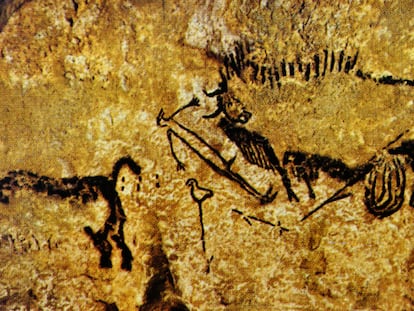The Met in New York takes on the cultural property debate
The museum has created a team to research the doubtful origins of some of its works, while creating new forms of collaborating with countries whose pieces are in dispute
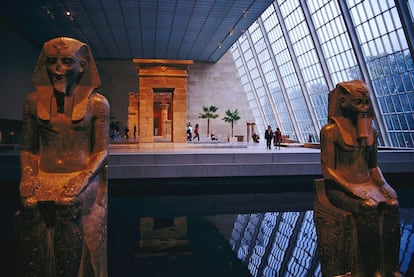

The Metropolitan Museum of Art in New York (the Met) is creating a team of four experts dedicated to tracing the provenance of pieces suspected to have been obtained via looting. Pressure from foreign governments, as well as judicial measures against the illegal trafficking of artworks, have pushed the museum to review its collections in the context of a global rereading of history; decolonization today involves returning marbles, bronzes and ceramics to the places they were stolen. The creation of the provenance team comes partly as a result of disputes like the ones the institution currently has with Cambodia. In short, it is a matter of redefining the concept of cultural property and doing so, for the first time, in a systematic way.
“With the appearance of new information and the changing climate around cultural goods, we must be proactive and deliberate in our focus and dedicate the resources and attention necessary for this labor. The initiatives we are creating, based on the principles of research, transparency and collaboration, trace a path to follow in this complex territory and show the world that we are committed to being a proactive and committed participant in ongoing debates, as well as an exceptional place to learn about the world’s cultures,” Max Hollein, the director of the Met, explained to EL PAÍS. He emphasized the institution’s preeminence in global culture. “As the guardian of almost 1.5 million artworks from more than 5,000 years of human creativity, and as a prominent voice in art and cultural heritage, it is essential for the museum to get involved in this issue,” he added.
ICYMI: Last week we returned two ancient sculptures that were looted during the Gulf War to the people of Iraq. “We will not allow New York City to be a safe harbor for stolen cultural artifacts.” - D.A. Bragg. Learn more in @artnews: https://t.co/zW45ESugeq
— Alvin Bragg (@ManhattanDA) May 22, 2023
In early May, in an open letter and an article on the museum’s website, entitled Reflections on The Met Collection and Cultural Property, Hollein expressed the need to respond to the growing scrutiny of its collections. The Met is not the only museum caught in the debate: Greece is in talks with the British Museum to repatriate the Parthenon marbles, and Germany recently returned Benin bronzes to Nigeria. Museums with works from other times and places are now haunted by suspicions of looting or contraband. The debate is not just academic, it also has legal connotations, as with the Manhattan prosecutor’s tireless search for stolen art.
The Manhattan district prosecutor has seized dozens of antiquities from the Met collection to return to Turkey, Egypt and Italy, among others. In 2008, the Met returned to Italy the famous Euphronios Krater, acquired in 1972 for $1 million. Last year, it returned 45 objects to different countries, trying to ward off criticisms that it had not taken sufficient action. “Despite the urgency the media environment may suggest, we must be diligent, thoughtful, and fair in our evaluation of any evidence being presented to us,” Hollein wrote in the article. “We are committed to getting it right, and equally committed to taking the time necessary to do so.”
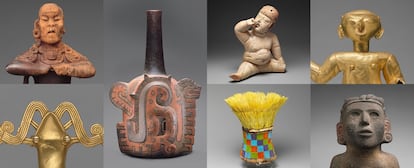
Just a few days ago, the prosecutor announced the return to Iraq of two pieces looted from the ancient city of Uruk during the Gulf War. One of them, a Sumerian figure of an alabaster ram, belonged to Shelby White, a Met trustee, and the other to an antiques trafficker. “We will not allow New York City to be a safe harbor for stolen cultural artifacts,” tweeted Manhattan District Attorney Alvin Bragg. Earlier this year, some thirty works, also owned by White and valued at $20 million, were returned to Greece.
The Antiquities Trafficking Unit, led by investigator Matthew Bogdanos, has been busy in recent months. In September, it seized 27 objects valued at more than $13 million, among them a valuable Greek kylix ceramic. In March, it requisitioned a headless bronze statue of the Roman emperor Septimio Severo, from the year 225, valued at $25 million. It had presided over the museum’s Greek and Roman galleries for years.
Collaboration with the prosecutor
The Met’s apparent urgency to trace the origin of its pieces is not motivated by the legal actions, according to its director. “We maintain a constant dialogue, and sometimes we are faced with evidence that we hadn’t seen, which makes us take action,” Hollein explained. “There is collaboration. I don’t think our efforts are opposed to the district attorney’s or that we should take a step because they have.”
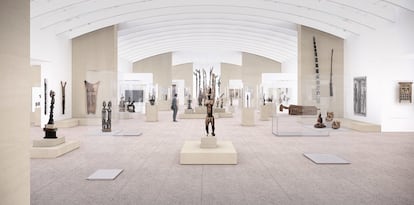
The professor Elizabeth Marlowe, director of the Museum Studies program at Colgate University, believes that the clamor of public opinion and the prosecutor have put pressure on the museum. “I think the Met is finally accepting that public opinion has moved towards restitution in cases of clear crimes. In recent years, the Manhattan prosecutor has also been very proactive in cases of looted artworks, and they are not afraid of going after the most valued works of the city’s most important cultural institution.”
Marlowe cites two landmark cases, the Cambodian Khmer works and the Benin Bronzes: “Scholars and journalists have done important work of uncovering the histories, like the sacking of Cambodian temples by Douglas Latchford [who was charged in 2019 in New York for falsifying the pieces’ origins and died the following year]. Social media has played a fundamental role in keeping public attention on the topic and on cases like the Benin Bronzes. The Met’s African galleries are currently closed, and they are being reinstalled for the first time in more than 30 years. Will they create a new distribution for their collection of 160 Benin Bronzes, or will they return them to Nigeria, as the Smithsonian, the German state museums and many other institutions have done? Time will tell.”
The three African art galleries, like those of Ancient American and Oceanic art, are temporarily closed for a “new renovation project which will reenvision these collections for a new generation of visitors,” according to the museum’s website. The Met has taken some steps with the Benin Bronzes, returning three pieces to Lagos at the beginning of the year as part of a collaboration with Nigeria’s National Commission for Museums and Monuments, similar to those with Sicily and Greece. The latter is part of a historic agreement: collector Leonard Stern’s collection of 161 pieces of Cicladic art, which is property of Greece, will be exhibited in the Met. The 15 most important pieces of the collection can be seen until October in the Museum of Cycladic Art in Athens, in an exhibit titled Homecoming: Cycladic treasures on their return journey. Starting in January, they will be housed in the Met for the next 25 years, although they continue to be property of Greece. Cultural diplomacy has become an alternative path to litigation. Two exhibitions that will open in July — one about the origins of Buddhist art in India and another about Pueblo pottery — follow that line of collaboration.
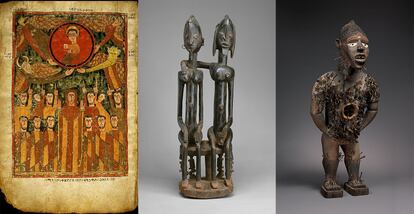
Also on the table is a discussion about a contemporary definition of the concept of cultural property. Many museum collections contain works obtained by exploiting societies suffering from poverty, colonialism, war and political instability. The Met is focusing on objects acquired between 1970 and 1990, when traceability was very lax. 1970 marks the beginning of an UNESCO treaty that attempted to end the illicit antiques trade, but which has been irregularly enforced.
Most of the pieces at the heart of Cambodia’s dispute with the Met left the country in the seventies, amidst political instability and the Khmer genocide. Phnom Penh claims at least 45 objects that were presumably robbed in that period. The Met has removed works from the gallery dedicated to Khmer artwork, but it has refused to show the documents that back up — or contradict — the legitimacy of their acquisition. It has asked, in turn, for Cambodia to offer proof that the works were illicitly obtained.
Today, the issue of identity also comes into the equation. “We live in a time,” Hollein wrote in the article, “when the idea of a cosmopolitan, global society is being challenged, and some, more nationalist voices embrace cultural artifacts less as ambassadors of a people but more as evidence of national identity.” A new definition of the museum is necessary, beyond a mere repository of objects. “We are able to present and share works with a global audience and to tell meaningful stories about those works from ancient times to the present day,” Hollein wrote.
Nazi looting and the Meadows Museum’s Murillos
The Nazi sacking of artworks deserves its own chapter in the history of looting. As in the George Clooney film The Monuments Men, teams of researchers and experts have scoured museums and private collections for stolen property. Amanda Dotseth, the director of Dallas’s Meadows Museum, knows the issue well. “We had a case with two Murillo paintings, Santa Justa and Santa Rufina, bought by Algur H. Meadows in the seventies, and we discovered that they had been seized by the Nazis from the Rothschild family in France. We investigated it, and we made it public when we found evidence that those two works had been returned to their owners before we acquired them, and they were incorporated into the Meadows.”
Dotseth stands behind the deep scrutiny applied: “I agree that we have to follow the best practices as much of the American Alliance of Museums (AAM) and the Association of Art Museum Directors (AAMD). In the Meadows Museum, we follow so-called ‘due diligence,’ the investigation of the provenance of the acquisitions. In the case that we find that a work in our collection has doubtful origins, we investigate it. We always have to keep investigating the origins of a work, as well as its modern history.”
Sign up for our weekly newsletter to get more English-language news coverage from EL PAÍS USA Edition
Tu suscripción se está usando en otro dispositivo
¿Quieres añadir otro usuario a tu suscripción?
Si continúas leyendo en este dispositivo, no se podrá leer en el otro.
FlechaTu suscripción se está usando en otro dispositivo y solo puedes acceder a EL PAÍS desde un dispositivo a la vez.
Si quieres compartir tu cuenta, cambia tu suscripción a la modalidad Premium, así podrás añadir otro usuario. Cada uno accederá con su propia cuenta de email, lo que os permitirá personalizar vuestra experiencia en EL PAÍS.
¿Tienes una suscripción de empresa? Accede aquí para contratar más cuentas.
En el caso de no saber quién está usando tu cuenta, te recomendamos cambiar tu contraseña aquí.
Si decides continuar compartiendo tu cuenta, este mensaje se mostrará en tu dispositivo y en el de la otra persona que está usando tu cuenta de forma indefinida, afectando a tu experiencia de lectura. Puedes consultar aquí los términos y condiciones de la suscripción digital.
More information
Archived In
Últimas noticias
Welcome to the post-religion era: The idea of Christianity as the absolute truth has become obsolete
‘I thought you would like it’: The risky sexual practice popularized by TV shows and TikTok
The digitalization of tourism: ‘They promise experiences and gave us the worst possible one’
Mexican peso defies uncertainty with forecasts of a new period of stability in 2026
Most viewed
- Sinaloa Cartel war is taking its toll on Los Chapitos
- Reinhard Genzel, Nobel laureate in physics: ‘One-minute videos will never give you the truth’
- Oona Chaplin: ‘I told James Cameron that I was living in a treehouse and starting a permaculture project with a friend’
- Why the price of coffee has skyrocketed: from Brazilian plantations to specialty coffee houses
- Silver prices are going crazy: This is what’s fueling the rally

